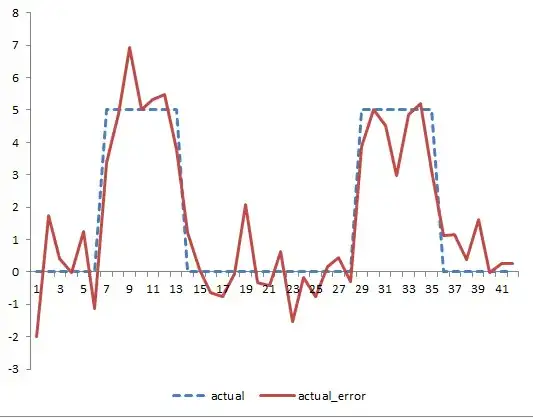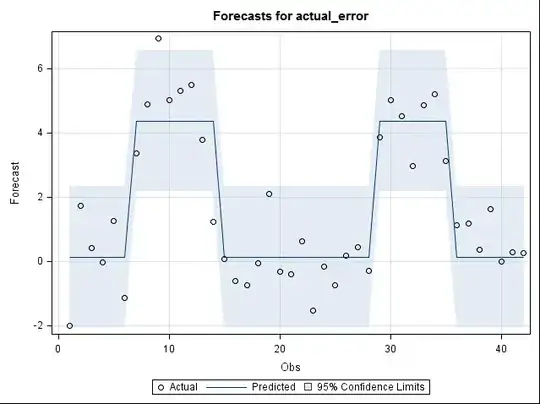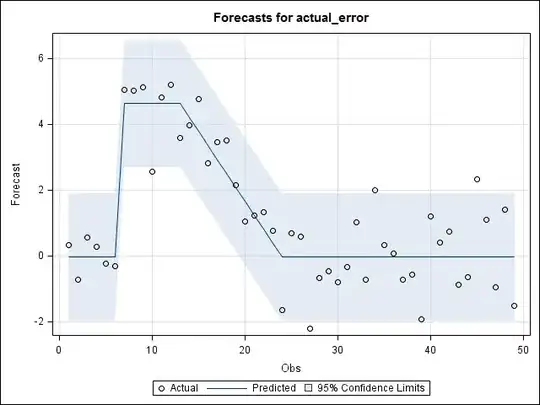Lets say you have a time series data 42 observations. Observation 7 to 13 have step(level shift) intervention and observations 29 to 35 have step intervention of 5 units. The remainder observations are 0. As an example, see below chart for simulated data with actual and actual + error.
If you would like to model this data as a intervention analysis using arima transfer function, you simply need to create a dummy coded variable with 1's for 7 to 13 and 1's for 29 to 35 and pass this is a step intervention in ARIMAX model. I don't know how to use R for transfer function modeling, so I used SAS. See below the actual and predicted data. The ARIMAX approximated the data very well. See below the SAS code that I used to create the data and as well as the ARIMAX.
If your second intervention has a first intervention has a decaying effect, all you need to do is create a second intervention variable at the end of first step function and code it appropriately.
Hopefully this helped.

data temp;
input actual @@;
error = rand("NORMAL");
datalines;
0 0 0 0 0 0 5
5 5 5 5 5 5 0
0 0 0 0 0 0 0
0 0 0 0 0 0 0
5 5 5 5 5 5 5
0 0 0 0 0 0 0
;
run;
data temp;
set temp;
actual_error = actual+error; *add random error;
if 7 <= _n_ <= 14 or 29 <= _n_ <= 35 then step = 1; * First Intervention step;
else step = 0;
run;
ods graphics on;
proc arima data = temp plots = all;
identify var=actual_error crosscorr = (step);
estimate input = (step) method = ml outest = mm1; /*Estimate Model using Transfer Function*/
forecast out = out1 lead = 0;
run;
ods graphics off;
EDIT: as b_miner would like to know how to model this with temporary level shift with a linear decay, I have modified the example. I have shown only the first level shift, the second level shift could be easily added. If you are looking for a decay other than a linear decay then it is fairly easy to do, just use a step+gradual permanent decay function using transfer function. Intervention modeling is more of an art than science. You assume a shape, test the hypothesis, if acceptable move on else change the shape. Intervention modeling is deterministic in nature. If you are interested in learning more about transfer function modeling/intervention detection, I would highly recommend Forecasting-Dynamic-Regression-Models-Pankratz. This text has all the different types of intervention models possible, in addition to transfer function modeling.
Hope this helps.
data temp;
input actual @@;
error = rand("NORMAL");
datalines;
0 0 0 0 0 0 5
5 5 5 5 5 5 4.1
4 3.5 3 2.5 2 1.75 1.25
0.75 0.25 0 0 0 0 0
0 0 0 0 0 0 0
0 0 0 0 0 0 0
0 0 0 0 0 0 0
;
run;
data temp;
set temp;
retain ramp 0;
actual_error = actual+error; *add random error;
if 7 <= _n_ <= 13 then step = 1;
else step = 0;
if 14 <= _n_ <= 23 then do;
step = (_n_ - 24)/(13-24);
end;
run;
ods graphics on;
proc arima data = temp plots = all;
identify var=actual_error crosscorr = (step);
estimate input = (step) method = ml outest = mm1; /*Estimate Model using Transfer Function*/
forecast out = out1 lead = 0;
run;
ods graphics off;




